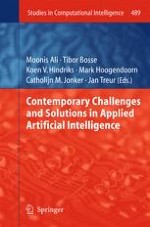Since its origination in the mid-twentieth century, the area of Artificial Intelligence (AI) has undergone a number of developments. While the early interest in AI was mainly triggered by the desire to develop artifacts that show the same intelligent behavior as humans, nowadays scientists have realized that research in AI involves a multitude of separate challenges, besides the traditional goal to replicate human intelligence. In particular, recent history has pointed out that a variety of ‘intelligent’ computational techniques, part of which are inspired by human intelligence, may be successfully applied to solve all kinds of practical problems. This sub-area of AI, which has its main emphasis on applications of intelligent systems to solve real-life problems, is currently known under the term Applied Intelligence.
The objective of the International Conference on Industrial, Engineering & Other Applications of Applied Intelligent Systems (IEA/AIE) is to promote and disseminate recent research developments in Applied Intelligence. The current book contains 30 chapters authored by participants of the 26th edition of IEA/AIE, which was held in Amsterdam, the Netherlands. The material of each chapter is self-contained and was reviewed by at least two anonymous referees, to assure a high quality. Readers can select any individual chapter based on their research interests without the need of reading other chapters. We are confident that this book provides useful reference values to researchers and students in the field of Applied Intelligence, enabling them to find opportunities and recognize challenges in the field.
